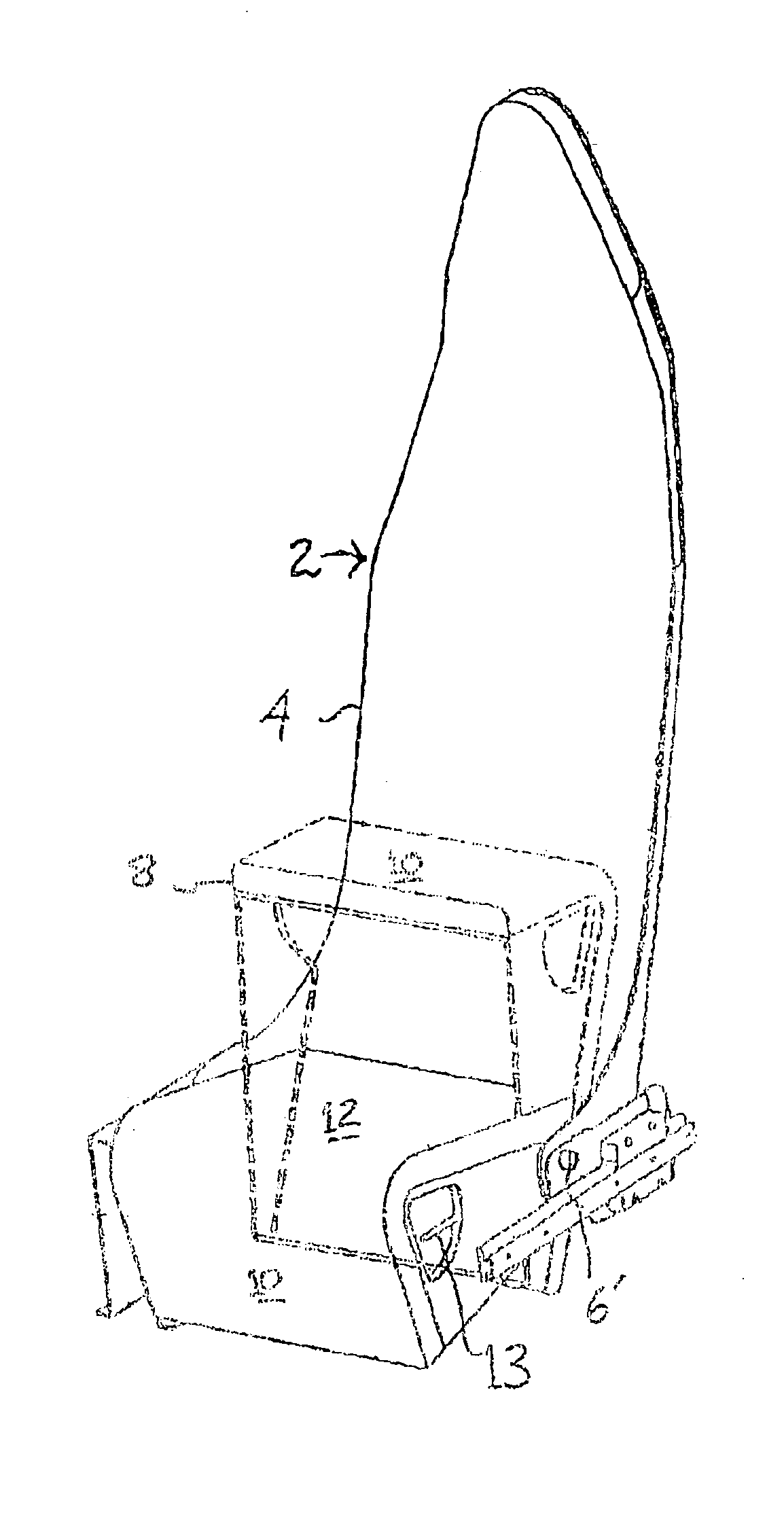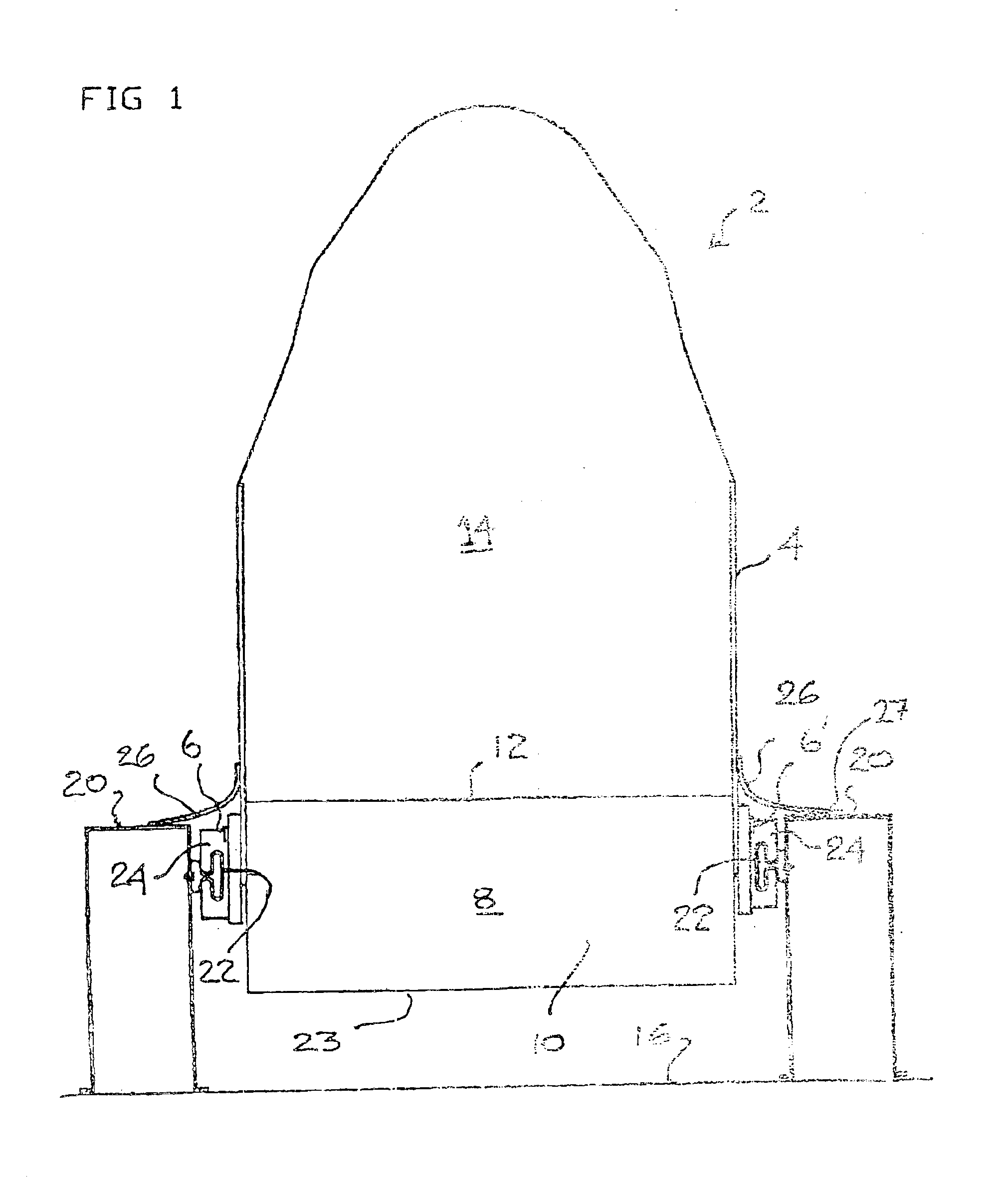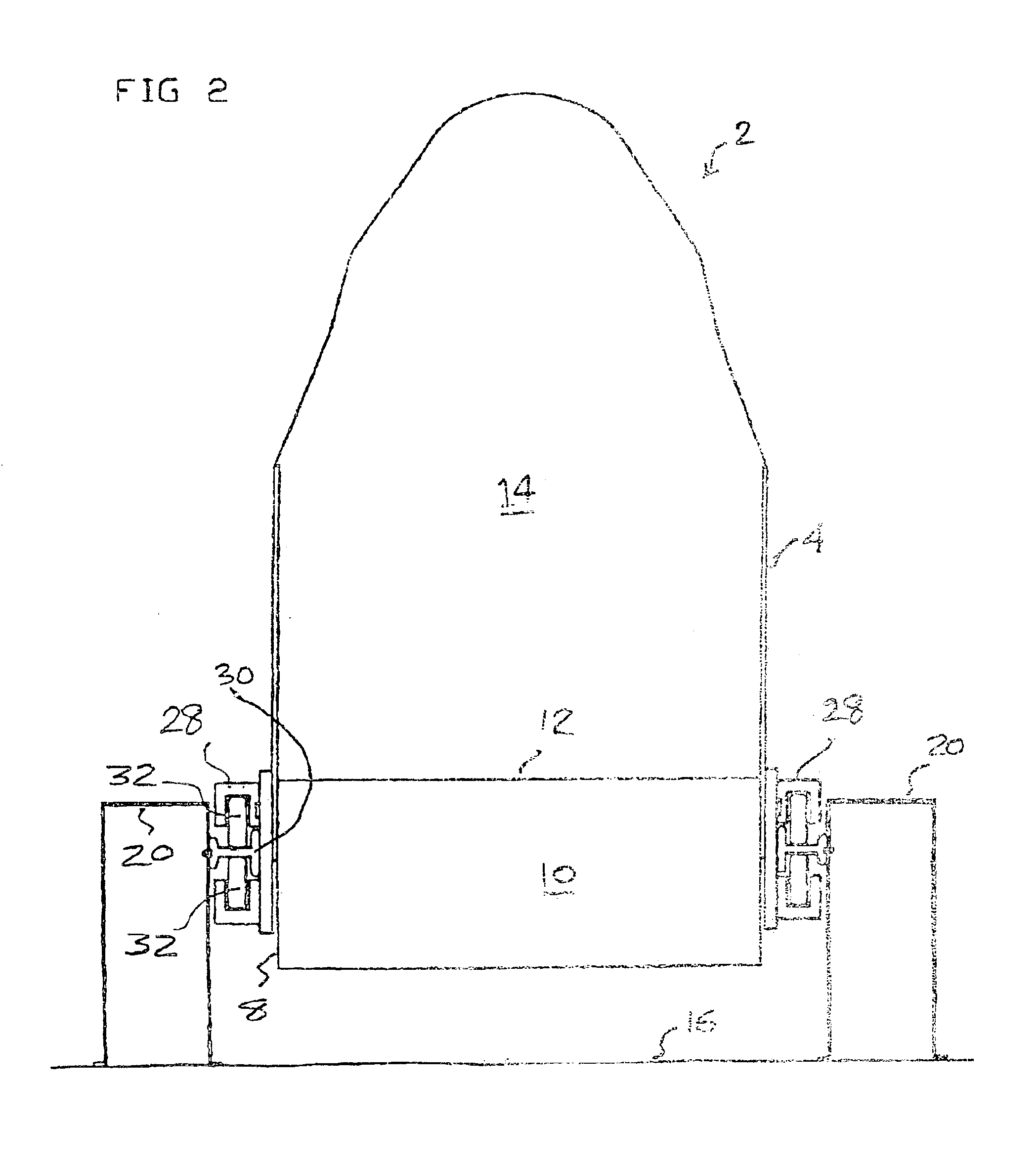Seating for amphibious vehicles
a technology for amphibious vehicles and seats, which is applied in the direction of floating buildings, crew accommodation, vessel construction, etc., can solve the problems of corrosion and/or jamming of the seat on the track, water splashing into, and sand blowing into the vehicl
- Summary
- Abstract
- Description
- Claims
- Application Information
AI Technical Summary
Benefits of technology
Problems solved by technology
Method used
Image
Examples
Embodiment Construction
[0021]FIG. 1 shows a seat generally at 2 having a frame 4. A tip-up seat cushion 8 is pivotally mounted at pivots 6 and 6′—see also FIGS. 5, 7, and 8 for similar seats. In FIGS. 7 and 8 the tip-up seat 8 is shown in the down / road driving position in said lines: whilst the seat 8 is shown in the up / water driving position in broken lines. The seat 8 has a locking handle 13 on one side, which operates as shown in FIG. 5. Handle 13 actuates pin or bar 15, shown in broken lines; which in turn engages one of two notches 17, 17′ in circular plate 19 on the pivot axis 6-6′, to hold tip-up seat 8 in one position or the other.
[0022]The driver or helmsman sits on the tip-up cushioned seating area 10 when the seat is in the up, or water, position; and on seat cushion 12 when the seat is in the down, or road, position. Numeral 14 denotes the backrest.
[0023]A further locking handle 18 is provided on the other side of seat 2 to handle 13. This further handle is used to lock the fore-and-aft adjust...
PUM
 Login to View More
Login to View More Abstract
Description
Claims
Application Information
 Login to View More
Login to View More - R&D
- Intellectual Property
- Life Sciences
- Materials
- Tech Scout
- Unparalleled Data Quality
- Higher Quality Content
- 60% Fewer Hallucinations
Browse by: Latest US Patents, China's latest patents, Technical Efficacy Thesaurus, Application Domain, Technology Topic, Popular Technical Reports.
© 2025 PatSnap. All rights reserved.Legal|Privacy policy|Modern Slavery Act Transparency Statement|Sitemap|About US| Contact US: help@patsnap.com



